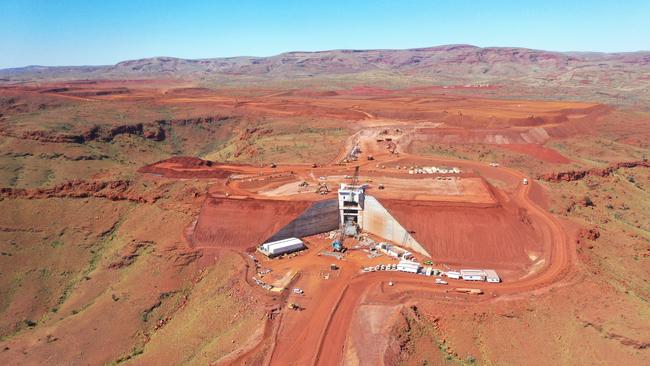Export-reliant economy faces potential risks
A volatile global economy and the rising indebtedness of governments have been flagged as potential risks to WA’s export-orientated economy.

A volatile global economy and the rising indebtedness of governments around the world have been flagged as potential risks to Western Australia’s export-orientated economy.
Soaring iron ore prices meant WA was responsible for 60 per cent of Australia’s exports last year, making it by far the most export-exposed of all states.
Budget papers tabled on Thursday note that while the global economic outlook has improved with the acceleration of vaccinations and the easing of Covid-19 restrictions overseas, the emergence of the Delta variant of the virus, its increased transmissibility and its potentially more severe impact on the health of younger people was a downside risk to global growth in the near term.
“The global outlook remains highly uncertain, with growth dependent on the success of the global vaccine rollout and vaccine efficacy,” the budget papers say. “In the near term, further outbreaks of the highly transmissible Delta variant or the emergence of vaccine-resistant strains of Covid-19 present downside risks.
“The significant fiscal policy response to the pandemic has pushed global government debt to unprecedented levels, reaching about 100 per cent of global GDP in 2020. Elevated debt levels make the financial system more vulnerable to a sudden increase in interest rates, which could stem from a rise in risk aversion, inflation, or expectations of faster monetary tightening.”
The economic volatility facing WA has already been felt in recent months, with the price of iron ore falling by about $US100 a tonne to just over $US130 a tonne.
The budget papers note that credit growth in China – by far the single biggest market for WA’s iron ore – has slowed and is likely to lead to Chinese construction activity slowing in the coming months.
WA’s Treasury is expecting the price of iron ore – which delivered more than $11bn to the state’s coffers in royalties last year – to average $US121.3m in 2021-22, before falling back to its long-term average of $US66 a tonne from 2022-23.
Asked if WA had been overly conservative in its iron ore forecasts, Premier Mark McGowan said he was determined to avoid the problems that marred the previous government. “If you embed too high a price on iron ore and the price is below that, all you end up with is deficits and huge debt,” he said.
“This is careful, sensible, reasonable and responsible budgeting.”
While China’s iron ore demand was by far the single biggest influence on the WA budget, the budget papers also highlight the domestic boom being experienced by the state.
Investment in new homes is set to grow by an extraordinary 27.25 per cent in 2021-22, as generous housing stimulus packages from both the WA and commonwealth governments and low interest rates drive a surge in construction.
WA’s economy grew 3.25 per cent in 2021 and is expected to grow by another 3.5 per cent this financial year.




To join the conversation, please log in. Don't have an account? Register
Join the conversation, you are commenting as Logout